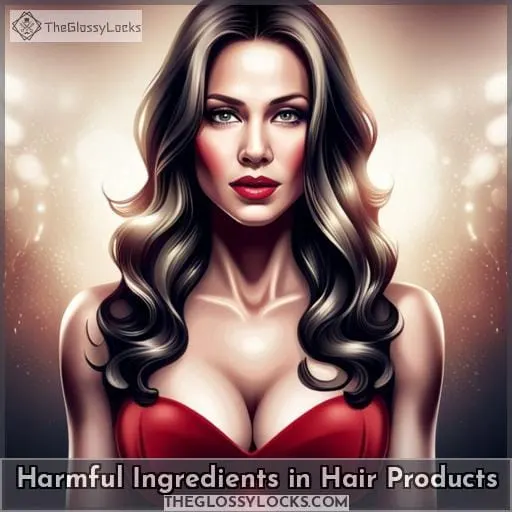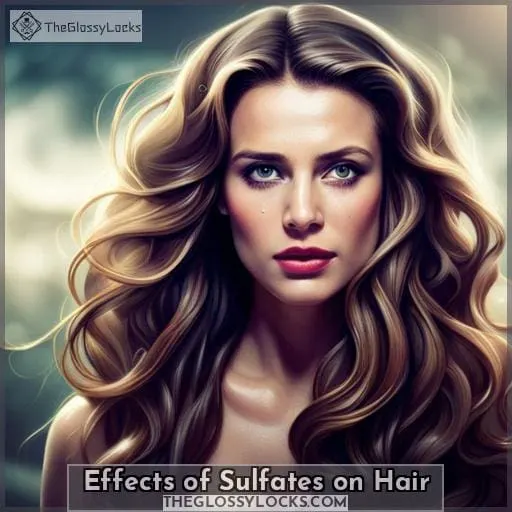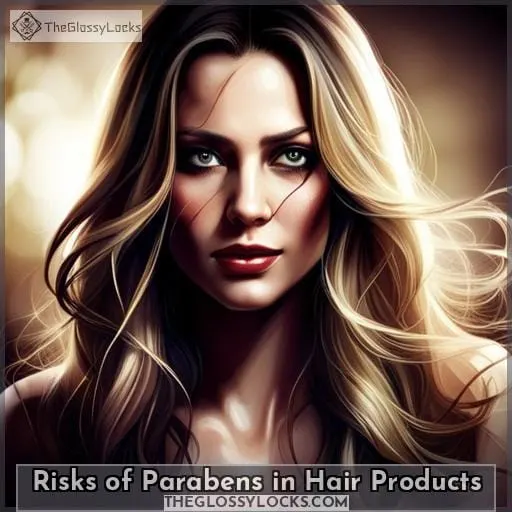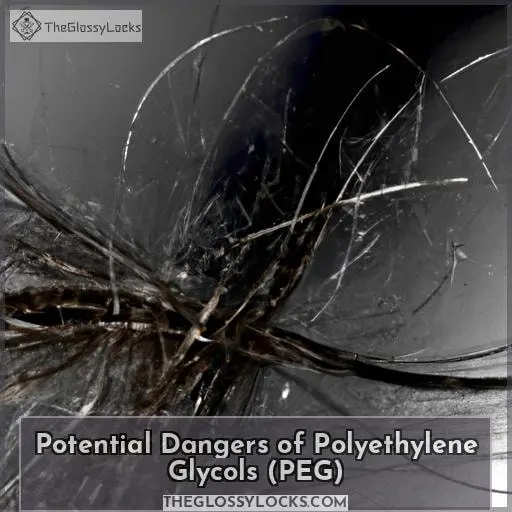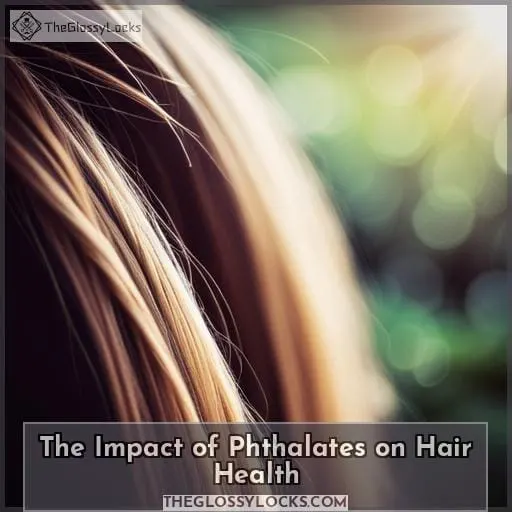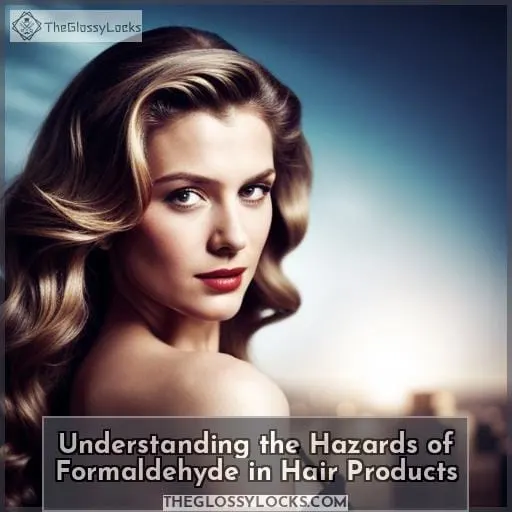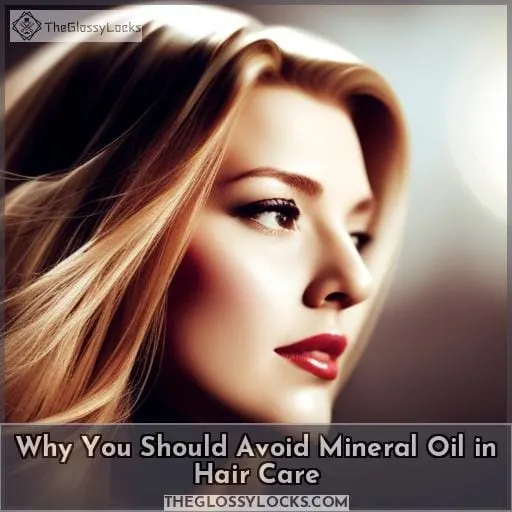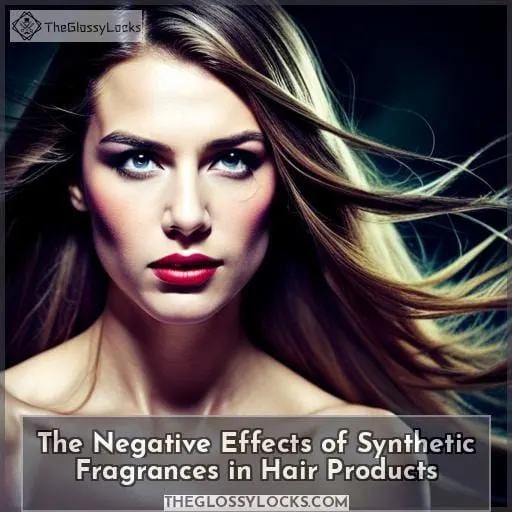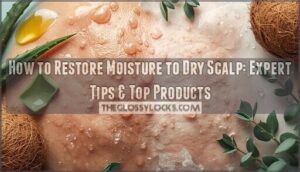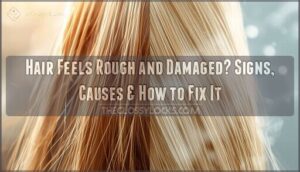This site is supported by our readers. We may earn a commission, at no cost to you, if you purchase through links.
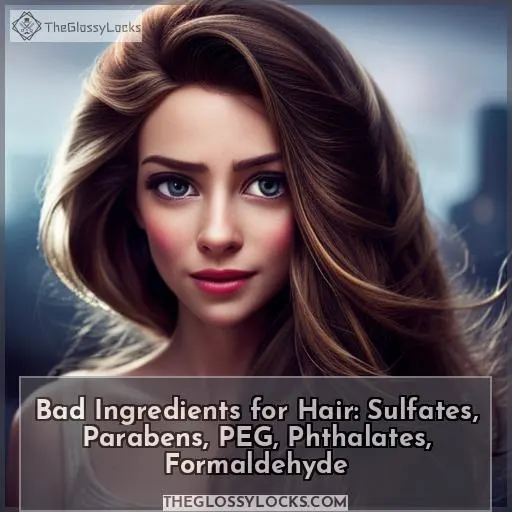
Take the case of Wendy*, a hairstylist from California who suffered from severe scalp irritation after using her go-to shampoo for years – turns out it was full of SLS!
Understanding which ingredients are harmful is essential in order to make healthier hair care choices. Here’s everything you need to know about bad ingredients for hair and how they can damage your health.
Table Of Contents
- Key Takeaways
- Harmful Ingredients in Hair Products
- Effects of Sulfates on Hair
- Risks of Parabens in Hair Products
- Potential Dangers of Polyethylene Glycols (PEG)
- The Impact of Phthalates on Hair Health
- Understanding the Hazards of Formaldehyde in Hair Products
- Why You Should Avoid Mineral Oil in Hair Care
- The Negative Effects of Synthetic Fragrances in Hair Products
- Conclusion
Key Takeaways
- Sulfates (SLS, SLES) strip natural scalp oils and harm the environment.
- Parabens mimic hormones and may increase the risk of breast cancer.
- PEG (Polyethylene Glycol) may cause scalp damage and contribute to environmental pollution.
- Phthalates are endocrine disruptors linked to cancer and fertility issues.
Harmful Ingredients in Hair Products
Choosing the right hair care products is essential for maintaining healthy and beautiful hair. Many common ingredients found in these products can be damaging, such as sulfates (SLS, SLES), parabens, polyethylene glycols (PEG), phthalates, and formaldehyde – all of which are known to cause skin irritation or worse.
Sulfates (SLS, SLES)
You may not realize it, but sulfates like SLS and SLES in your hair care products can cause scalp reactions and harm the environment. Instead, opt for sulfate-free formulas with milder surfactants to reduce irritation.
Look for good alternatives such as coconut oil, quaternium salts, or silicon oils in shampoos to protect against the damaging effects of harsh chemicals.
Not only do these ingredients help keep your scalp healthy, but they also have a low environmental impact compared to traditional ingredients containing sulfates.
Parabens
Be aware that parabens, such as butyl, propyl, and ethyl parabens, can mimic hormones and may increase the risk of breast cancer. These chemicals are commonly used in cosmetics to preserve them from bacteria and fungi.
They have been found in several studies to be linked to hormonal disruption, which could lead to reproductive problems or even tumors.
Skin irritation is also a potential side effect if there is too much exposure through topical application on the skin or scalp. The controversy surrounding these ingredients has led many companies to use natural preservatives like essential oils instead of synthetic ones, such as parabens, for their products.
Consumers should always read labels carefully when choosing hair care products so they know what they’re putting onto their bodies!
Polyethylene Glycols (PEG)
Polyethylene glycols (PEG) can cause scalp damage, leaving your hair feeling brittle and lifeless like a dried-out riverbed. PEG is commonly found in cosmetics, skincare products, and other personal care items as an emulsifier or preservative.
However, the use of this chemical has raised safety concerns. Alternatives to PEG, like plant oils, are becoming increasingly popular among those aware of the potentially damaging effects caused by its usage in hair care products.
It’s best to steer clear of toxic ingredients such as polyethylene glycols when looking for natural yet effective shampoos and conditioners that will keep your locks healthy!
Phthalates
Phthalates lurk in many hair products, wreaking havoc on your health and the environment. They are endocrine disrupters linked to developmental defects, infertility, and cancer. Phthalates can be found in fragrances as well as cosmetics like shampoo and conditioner.
Regulatory bodies do not always enforce phthalate-free ingredients clearly labeling them; instead, they hide under fragrance or parfum terms on product labels. This makes it challenging for consumers to know what they’re getting into when purchasing a product containing these chemicals without proper guidance from retailers or brand awareness campaigns by manufacturers themselves.
There are plenty of alternatives available, such as natural oils, which nourish the scalp while avoiding any potential risks associated with phthalate exposure.
Formaldehyde
Formaldehyde is a potential cancer-causing agent found in some hair treatments, so steer clear of it with the intensity of a lightning bolt!
Found in many products labeled as formaldehyde releasers, this toxin can be absorbed through the skin and cause irritation.
Hair product safety should always be considered when choosing which to use; constant exposure to formaldehyde can lead to hair health risks such as dry scalp, split ends, and dandruff.
Avoiding harmful ingredients like formaldehydes will help keep your locks luxurious without any worry about possible toxins or skin irritants.
Read labels carefully and look for organic/natural alternatives that contain safer ingredients like coconut oil or plant-based oils – these are gentle enough for everyday use yet still nourish from root to tip!
Effects of Sulfates on Hair
You may already know that sulfates like sodium lauryl sulfate (SLS) can be quite damaging to your hair.
Sulfates strip away natural oils from the scalp, resulting in weak or brittle strands. They also have an environmental impact due to their potential toxicity in rivers and other waterways.
Thankfully, there are many alternatives available – opt for mild surfactants such as those derived from coconut oil instead of harsher ones like ammonium lauryl sulphate (ALS).
Additionally, label reading is key: look out for synthetic colors and fragrances which could contain harmful chemicals; mineral oil should also be avoided as it cannot penetrate into the hair shafts effectively compared to plant-derived oils such as jojoba or argan.
With a bit of research and knowledge about ingredients found in shampoos today, you can make informed decisions when selecting products that suit your needs!
Risks of Parabens in Hair Products
Parabens can be a hidden danger lurking in your hair care products, so keep an eye out for them! Butyl, propyl, and ethyl parabens are synthetic preservatives used to extend shelf life. Unfortunately, they also mimic hormones like estrogen that can increase breast cancer risk when absorbed through the skin from beauty care products.
Alternatives include safe preservatives such as sodium benzoate or potassium sorbate, which don’t disrupt hormones or cause irritation. Paraben-free brands are becoming more common; however, it’s important to read labels carefully because some manufacturers replace parabens with equally hazardous chemicals like formaldehyde releasers instead of safer alternatives.
In order to ensure haircare safety, always check ingredients lists before buying any product and opt for those without known hormone-disrupting agents – including but not limited to paraben-containing ones – whenever possible!
| Bad Ingredients | Safe Alternatives |
|---|---|
| Butyl/Propyl/Ethyl Paraben | Sodium Benzoate, Potassium Sorbates |
| Formaldehyde Releasers | Quaternium 15, Triclosan |
Potential Dangers of Polyethylene Glycols (PEG)
From parabens to polyethylene glycols (PEG), there are many ingredients in hair care products that can be potentially dangerous. PEG is a petroleum-based compound used as an emulsifier and thickener. It’s found in various personal care items like shampoos and conditioners, but it may cause irritation or allergic reactions when applied directly to the skin.
The use of this ingredient should be approached with caution due to its safety concerns. Firstly, there is a risk of contamination with carcinogenic 1,4-dioxane. Secondly, PEG can compromise the barrier function on the scalp.
Additionally, it has low biodegradability, which leads to environmental pollution. Moreover, there is a potential for interactions with other toxins such as quaternium-15 and alcohols used in hair care products.
Lastly, there is a possibility of damage from toxic byproducts such as ethylene oxide or formaldehyde released during processing.
PEG can also weaken protective layers on your scalp, allowing for more harmful chemicals like petrolatum (a source of PAHs), pesticide residues, perfumes & fragrances, silicones & phthalates to enter your body via skin absorption! If you want safer alternatives for your haircare routine, look out for natural oils instead – argan oil is a great choice.
Make sure to read labels carefully before purchasing any product containing PEG so you know what risks you’re taking into account when using them regularly.
The Impact of Phthalates on Hair Health
Phthalates, a type of endocrine disruptor that can be found in many hair care products, may wreak havoc on your locks if you’re not careful. Found in shampoo and conditioner formulas, as well as styling products like hairspray and mousse, phthalates are linked to numerous health issues including fertility problems and hormone imbalances.
Phthalate exposure through conventional beauty items has been linked to increased risks for breast cancer due to their ability to mimic natural hormones such as estrogen. Hair loss is another potential side effect of using these hazardous chemicals regularly over the long term.
Additionally, they pollute our environment because once released into the water supply they remain there for years before breaking down naturally or dispersing from bodies of water altogether leading contaminants further downstream than originally intended when used during manufacturing processes.
To avoid exposing yourself unnecessarily, opt for organic brands with fewer synthetic ingredients or make your own homemade shampoos free from toxins like selenium sulfide, triclosan, propylene glycol, and phthalates.
Seek out safer alternatives both within store shelves but also more DIY approaches utilizing clean ingredients without any compromising effects on human health nor environmental contamination.
Understanding the Hazards of Formaldehyde in Hair Products
Be aware of the potential hazards of formaldehyde in hair products, as it can be linked to an increased risk of cancer. Formaldehyde is a chemical that is used in many beauty products, from shampoos and conditioners to treatments and styling aids.
It has been found to cause skin irritation and respiratory problems when inhaled or absorbed through the skin over time.
The most concerning issue with formaldehyde exposure lies within its ability to increase cancer risks due to its carcinogenic properties. To ensure your safety while using hair care products, look for alternatives labelled formaldehyde-free or opt for natural brands devoid of synthetic chemicals like retinyl palmitate, which have also been associated with health concerns such as organ toxicity and birth defects.
When making purchasing decisions about haircare items, read labels carefully so you know what ingredients are included in each product. Avoid those containing potentially hazardous components like formaldehyde at all costs! Additionally, research brands whose transparency allows them to disclose all ingredients present on their bottles.
Why You Should Avoid Mineral Oil in Hair Care
You should steer clear of mineral oil in hair care products, as it doesn’t have the ability to penetrate hair fibers like natural oils do. Mineral oil is a petroleum-derived substance used in skin and hair care products that can lead to long-term scalp issues due to its inability to be absorbed by the body.
In addition, many companies use mineral oil as an inexpensive alternative for more expensive ingredients without disclosing this on their product labeling. This means consumers may falsely believe they are buying a safe product when it actually contains potentially hazardous ingredients such as mineral oils.
Furthermore, some brands claim their formulas include natural colors or fragrances, but these could be synthetic versions which contain harmful chemicals linked with cancer or organ toxicity.
To avoid these risks, seek out plant-based alternatives instead. Organic hemp seed extract is a great option for conditioning properties.
The Negative Effects of Synthetic Fragrances in Hair Products
Synthetic fragrances in hair products can cause skin reactions, and while they may add a pleasant scent to the product, it’s important to be aware of their potential risks. Fragrance toxicity is often overlooked when choosing haircare products. Many synthetic scents contain harmful chemicals that can disrupt the body’s hormones and lead to allergic reactions or headaches.
It’s best to avoid formulas with fragrance listed high up on their ingredient lists. These are likely more concentrated than those with lower concentrations. Fortunately, there are plenty of safe alternatives available, such as certified-organic ingredients like aloe vera or coconut oil, which provide natural fragrance without any added toxins.
Additionally, opt for shampoo and conditioners labeled fragrance-free. These products don’t include perfumes but still offer effective cleaning power for your locks!
Conclusion
You may have thought bad ingredients in hair products are something to worry about, but in reality, they pose a greater danger to your hair than you may think. Sulfates like SLS and SLES can strip your hair of its natural oils, leaving it dry and brittle.
Parabens can mimic hormones, increasing your risk of breast cancer. Polyethylene glycols (PEG) can damage your scalp, while phthalates can disrupt your endocrine system.
To maintain healthy hair, it’s important to be aware of the potential dangers of these chemicals and avoid them in your hair care products.

